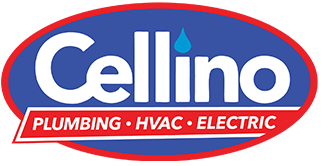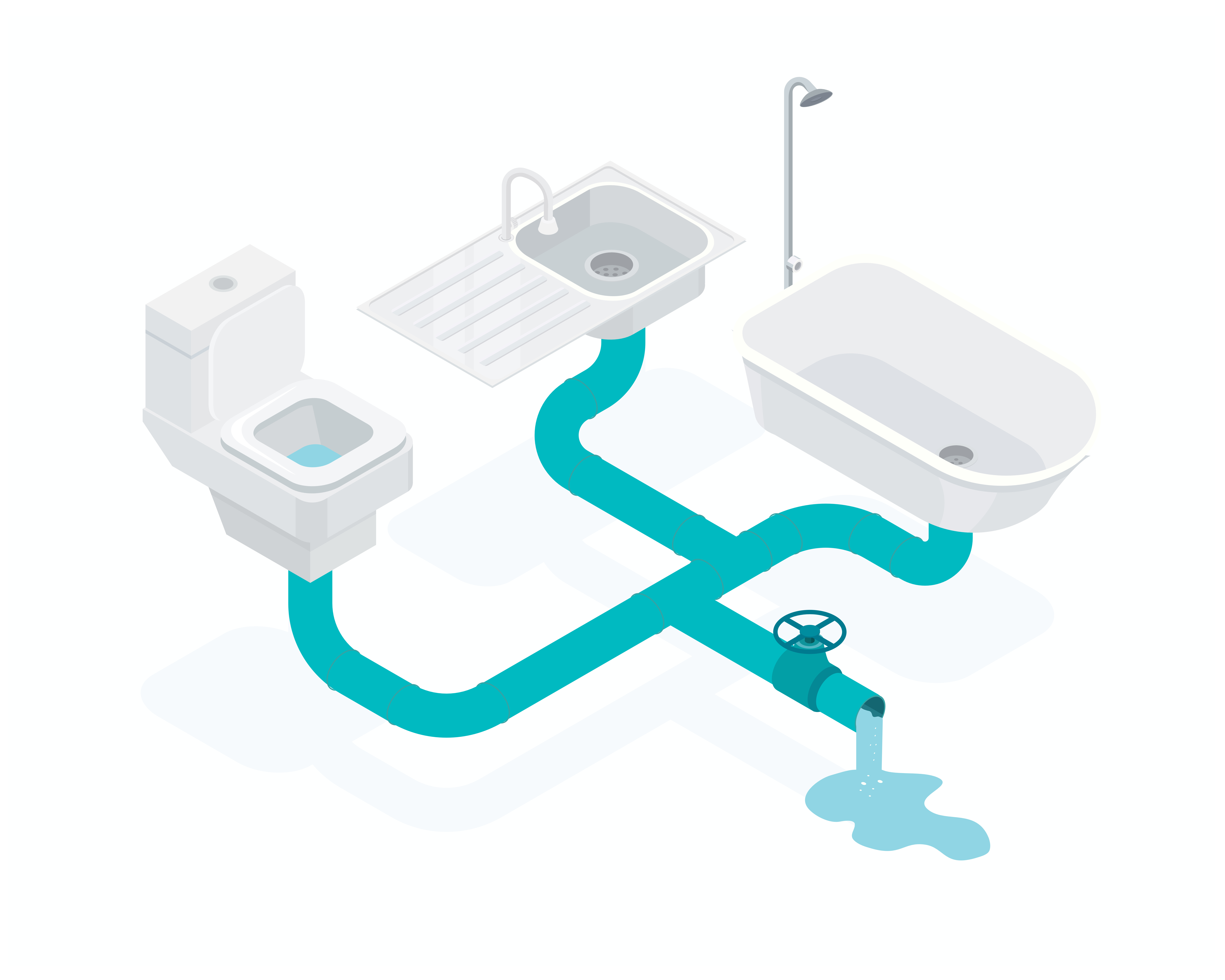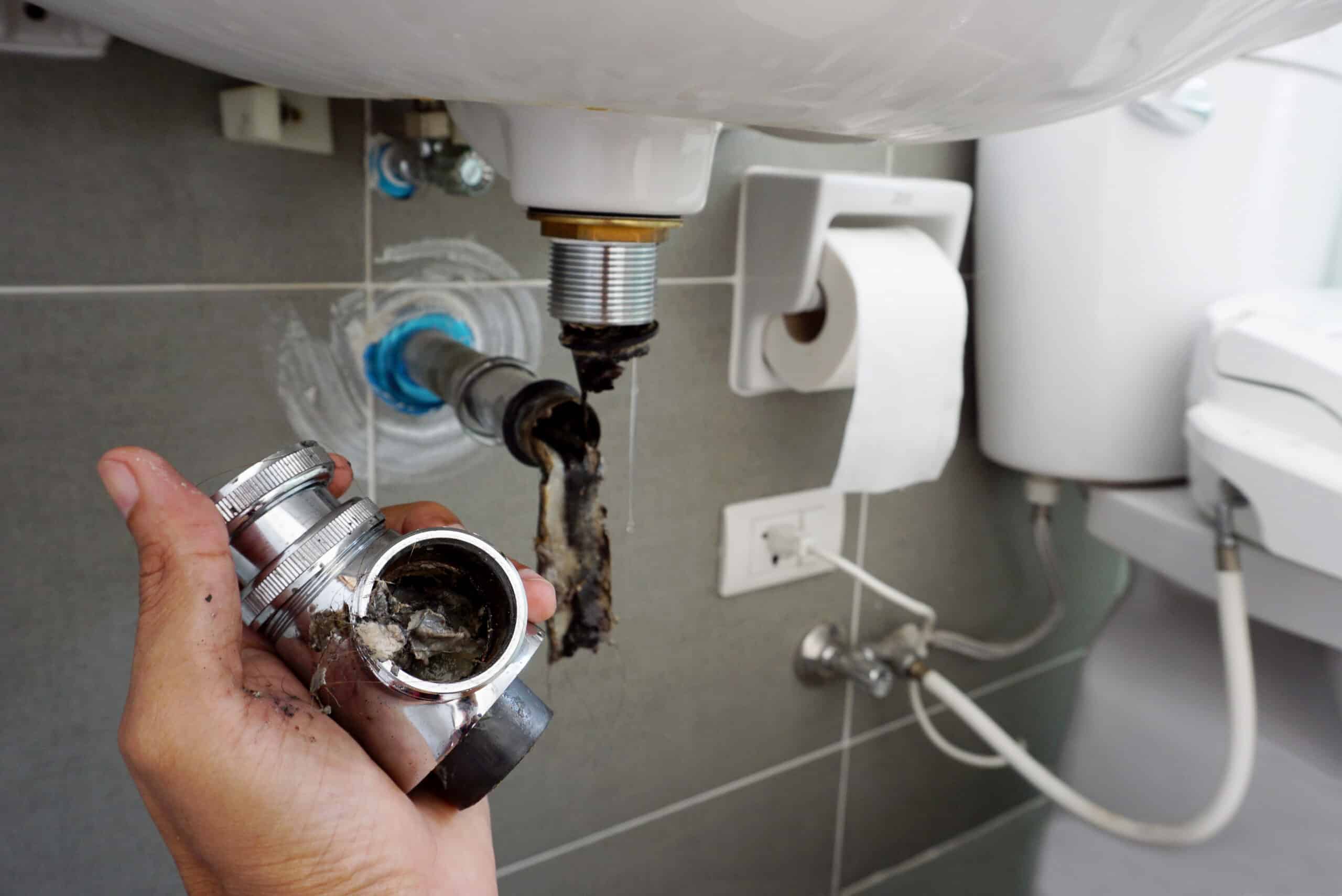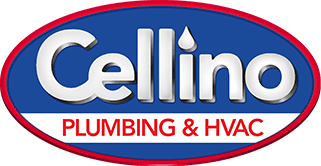We may be going out on a limb, but most people probably don’t give plumbing fixtures in their home a second thought. That is, until something goes wrong. When a buildup of grease, soap scum, and other debris hits the limit, what do you get? An obnoxious, slow drain.
Maybe it’s a common battle in your house. But with a little insider info from Cellino’s expert plumbers, you can finally knock it out. In fact, most clogs don’t require a professional plumbing service — so you can take care of business without breaking the bank!Here’s what our technicians have to share about cleaning a sink drain in your kitchen or bathroom.
Common Culprits Behind a Clogged Drain or Sink
Sink drains can accumulate a lot of nasty build-up. Here are the offenders that we see the most in kitchens and bathrooms.
Kitchen Sink & Drain Clogs
Grease, Fat, and Oil. Whether it’s from leftovers or residue from cooking utensils, these are a menace on your kitchen sinks. Once in your pipes and cooled off, these solidify and create a blockage.
Food Scraps. Coffee grounds, rice, pasta, and other food can evade or even damage your garbage disposal system, causing build-up and resulting in a sluggish drain.
Soap Scum. Though not as common as grease and food scraps, soap scum can still accumulate in your kitchen sink. Add it to the grease and food scraps, and you’ve got a recipe for a gnarly clog.
Bathroom Sink & Drain Clogs
Hair. This may be the biggest contributor to bathroom clogs. Hair clumps together and traps other debris, becoming a formidable foe for your drains.
Soap Scum. Similar to kitchen sinks, soap scum can build up and create blockages or make existing ones worse. Soap scum buildup tends to be much worse in bathrooms than in kitchens, though.
Toiletries. Cotton swabs, dental floss, and other personal hygiene products can also be the reason for bathroom drain clogs if not disposed of properly.
Universal Culprits Behind Clogs
Mineral Build-Up. Hard water with high mineral content can leave deposits, leading to a gradual narrowing of the pipes. This can result in a blockage.
Small Objects. Lost jewelry, toys, and other small items that accidentally find their way down your sink or drains can also contribute to clogs.
Tree Roots. This type of clog is common in older homes with sewer lines close to trees. Their roots can infiltrate pipes, not only causing a blockage but also dealing some serious structural damage to the pipes.
How to Unclog a Kitchen Sink or Remove a Bathroom Drain Plug
Make Use of Natural Remedies
You don’t have to rely on harsh, expensive chemicals to get the job done. In fact, it’s best to avoid them. Chances are, you already have what you need in your home to remedy a clogged drain.
Baking Soda & Vinegar
A classic duo and a perfect combination that can put drain clogs and sink blockages in their place. Here’s how to put it to use:
First, remove any debris you can see and reach from the drain opening. Dump ½ cup of baking soda down the drain, followed by slowly pouring 1 cup of white vinegar. If you see some fizzing and bubbling action, the baking soda and vinegar are working their magic. Let the solution sit for at least 15 minutes before washing it down with boiling water.
Hot Water
Sometimes, an annoying problem calls for a simple answer. Enter, hot water. If you’re facing off grease, fat, and oils down your kitchen sink, try pouring a pot of boiling hot water down the drain. This turns solidified grease back into liquid, making it easier to flush down the pipes.
Try These Plunging Techniques
You don’t have to be a pro to handle a drain clog like one. With a little elbow grease, there’s a good chance you can solve the problem without spending money on a service.
The Classic Plunger
Don’t underestimate the power of a classic plunger. It’s a go-to tool for professionals for a reason — it works! A trusty plunger can dislodge minor clogs like hair and soap scum. Here’s how to use it:
Fill the sink with enough water to cover the plunger cup and plunge vigorously for 15 to 20 seconds. To boost effectiveness, try the following:
- The Double Plunge. Plug the overflow drain (the secondary hole near the top of the sink) with a wet rag, creating a stronger seal. Plunge as usual.
The Hot Water Assist. After plunging, you can pour a kettle of hot water down the drain to flush away any debris that got loosened from plunging.
Going Beyond the Basics
If you’re feeling adventurous, try out these more advanced tools and techniques. But don’t worry — they’re still simple enough for anyone to use!
The Snake Drain
Snake drains can be a lifesaver for the more stubborn clogs, and you can get them at most hardware stores. Inserting the long, flexible metal cable down the drain and turning the crank to rotate the wire can break up the clogs inside the pipes and remove the blockage. Always follow the manufacturer’s instructions for safe and effective usage.
Chemical Drain Cleaners
For tougher clogs that even a snake drain can’t vanquish, chemical cleaners might be the answer. However, bear in mind that harsh chemicals can sometimes cause more harm than good for your pipes. That’s why it’s best to use them sparingly and try some of our other methods first. Also, make sure to ventilate the room and follow the manufacturer’s instructions while using chemical drain cleaners.
Calling the Cavalry
When all else fails, it’s time to pull the trump card and call the pros. Sometimes, blockages are too stubborn or too severe and require more specialized tools and treatment methods — such as a hydrojet.
Keep Your Drains Free-Flowing: Prevention is Key!
The best way to treat a clog? Keep it from forming in the first place! We know it’s unrealistic to prevent all drain blockages. But with a little diligence, you can avoid a lot of headaches with these simple practices:
- Trap the culprits. Drain strainers help limit the main causes behind common clogs in your kitchen and bathroom.
- Minimize the grease. Despite using a drain strainer, it can’t save your sinks from grease. Wipe greasy pots and pans with a paper towel before washing them.
- Schedule a routine cleaning and inspection. Make it a habit to clean your drains and sinks regularly with baking soda and vinegar. We also recommend investing in an annual plumbing inspection to keep your pipes in great condition and avoid future problems.
Become a drain-cleaning champion and keep your kitchen and bathroom sinks and drains flowing smoothly. But don’t hesitate to call for help for stubborn clogs or if you’re uncomfortable using any methods mentioned above.Call Cellino Plumbing, Heating & Cooling today to schedule your service (same day appointments available!). But first — be sure to check out our coupons and promos!




